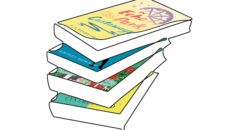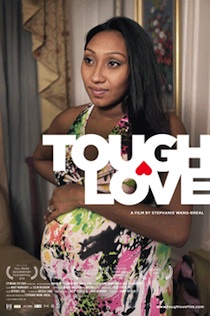 Tough Love
Tough Love
Tough Love is a compassionate introduction to several different perspectives in the foster care system. It follows the stories of two parents — a mother who is working to maintain custody of her newborn after her other children were placed in care, and a father trying to reunite with his daughter before his parental rights are terminated. Along the way, the film captures the voices of the foster parents who care for the children, the CASAs who advocate for them, the social workers who manage their cases, and the judges who make hard decisions about the children’s future safety.
Discussion Questions:
- How did you feel when the child is reunited with her biological parents?
- Who did you relate to most in this film?
- Did Tough Love change your view of foster care?
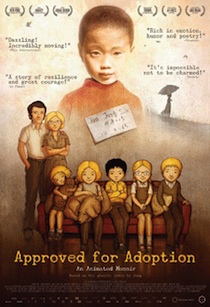 Approved for Adoption
Approved for Adoption
As a child, Jung wandered the streets of Korea alone. He was eventually taken to an orphanage, then adopted and raised by a Belgian family. In this unique, animated film, Jung looks back at his childhood and adolescence — the ways in which he felt accepted or considered an outsider by his new community and his community of origin — and delves into the internal struggles that are shared by many internationally-adopted individuals.
Discussion Questions:
- Jung asks his sister, “Do you think of me as your real brother?” How did that make you feel?
- What’s the difference between having a “place in the family” and a “place in the heart?”
- Are there any taboo topics in your family? What’s the risk of that? How could they be opened up?
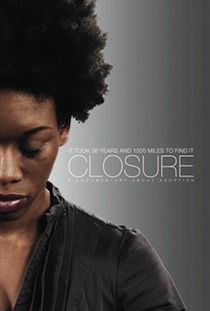 CLOSURE
CLOSURE
Transracially adopted from foster care, Angela Tucker thrived in her family, defying doctors’ predictions that she might never walk. As she entered adulthood, a longstanding curiosity about her birth family led her to search. Angela’s family supports her quest; several family members and her husband, who is also the filmmaker, join her as she travels to meet the man she believes is her birth father. Together they face rejections and persevere to have meaningful experiences with her biological relatives.
Discussion Questions:
- How do you relate to Angela’s family’s initial fears about search?
- How did you feel when Angela met with rejection? Would you have encouraged her to keep going?
- Angela’s family does not talk about race. How does this make you feel?
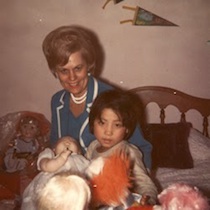 First Person Plural
First Person Plural
In the 1960s, a couple from the U.S. planned to adopt a child they’d been “sponsoring” in a Korean orphanage. When that girl returned to her birth family, the orphanage sent Deann Borshay in her place, telling her to keep her identity a secret. Deann eventually told her parents, and they supported her, with some reservations, as she uncovered the truth about her past and her birth family. “I feel like I’ve been several people in one life,” she says. This film portrays the many different emotions adoption can bring. Birth family members grieve Deanna’s loss, but applaud her adoptive parents and the opportunities they gave her. Deanna balances the sense of rejection she feels about having been sent away with appreciation for the life she’s had.
Discussion Questions:
- How many identities do you feel you have? What do you think your kids would say?
- Is it possible to have more than one “real” mother?
- What will you do to help your child create a holistic sense of his or her own identity?
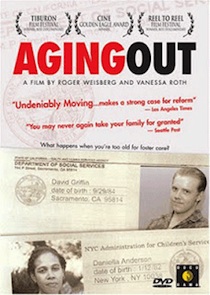 Aging Out
Aging Out
There are more than 500,000 children in U.S. foster care. While many of them reunify with their families or are adopted, around 20,000 age out of care each year. Aging Out tracks the lives of three young adults who “outgrew” foster care. It is alternately heartbreaking and inspiring, capturing the frustration these young people feel, the frustration they cause — and the successes that some of them realize.
Discussion Questions:
- Which foster youth did you identify with the most? Which foster parent or caseworker?
- If you could change one thing about the foster care system, what would it be?
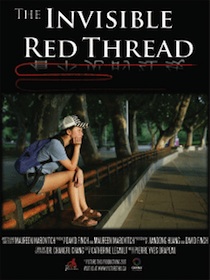 The Invisible Red Thread
The Invisible Red Thread
Vivian describes herself as a “very Westernized” person who doesn’t “feel Asian.” With her family, the 15-year-old visits the Chinese orphanage where she spent her first months and meets Shumin, a girl who was adopted around the same time she was, but by a Chinese family. As Vivian returns home, she explains that she doesn’t have to ask “what if” anymore, because she knows. Her parents understand that adoption means different things at different points in life, and expect Vivian will want to return to China again one day.
Discussion Questions:
- What does adoption mean in your child’s culture?
- What strengths do you see in Vivian’s family? In Shumin’s?
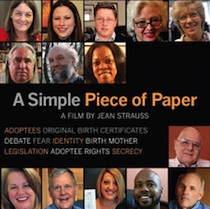 A Simple Piece of Paper
A Simple Piece of Paper
Filmmaker Jean Straus invites us into the stories of several adults — some in their thirties, some middle-aged, and some senior citizens — who receive their birth certificates for the first time. Seeing a 74-year-old adoptee brought to tears by this “simple piece of paper” was a powerful reminder that questions of origin remained in his mind through a long, full life.
Discussion Questions:
- What would you ask your birth mother, if you had the chance?
- How did you feel when you saw one man learn his birth name?
- Would you want to know if you had a sibling?
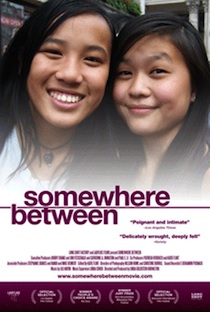 Somewhere Between
Somewhere Between
Somewhere Between follows four teenage girls adopted from China. For some, “adoptee” is a primary identity, while others see different aspects as more central to their self-concept. One of the girls struggles with feeling neither completely Chinese nor completely American — stuck between two countries. Another speaks of “always being seen, and never blending in,” and facing stereotypes.
Discussion Questions:
- When someone is adopted, do they become fully part of the adoptive family? Do they remain part of the birth family? Can they be both?
- Which girl’s story resonated with you the most?


